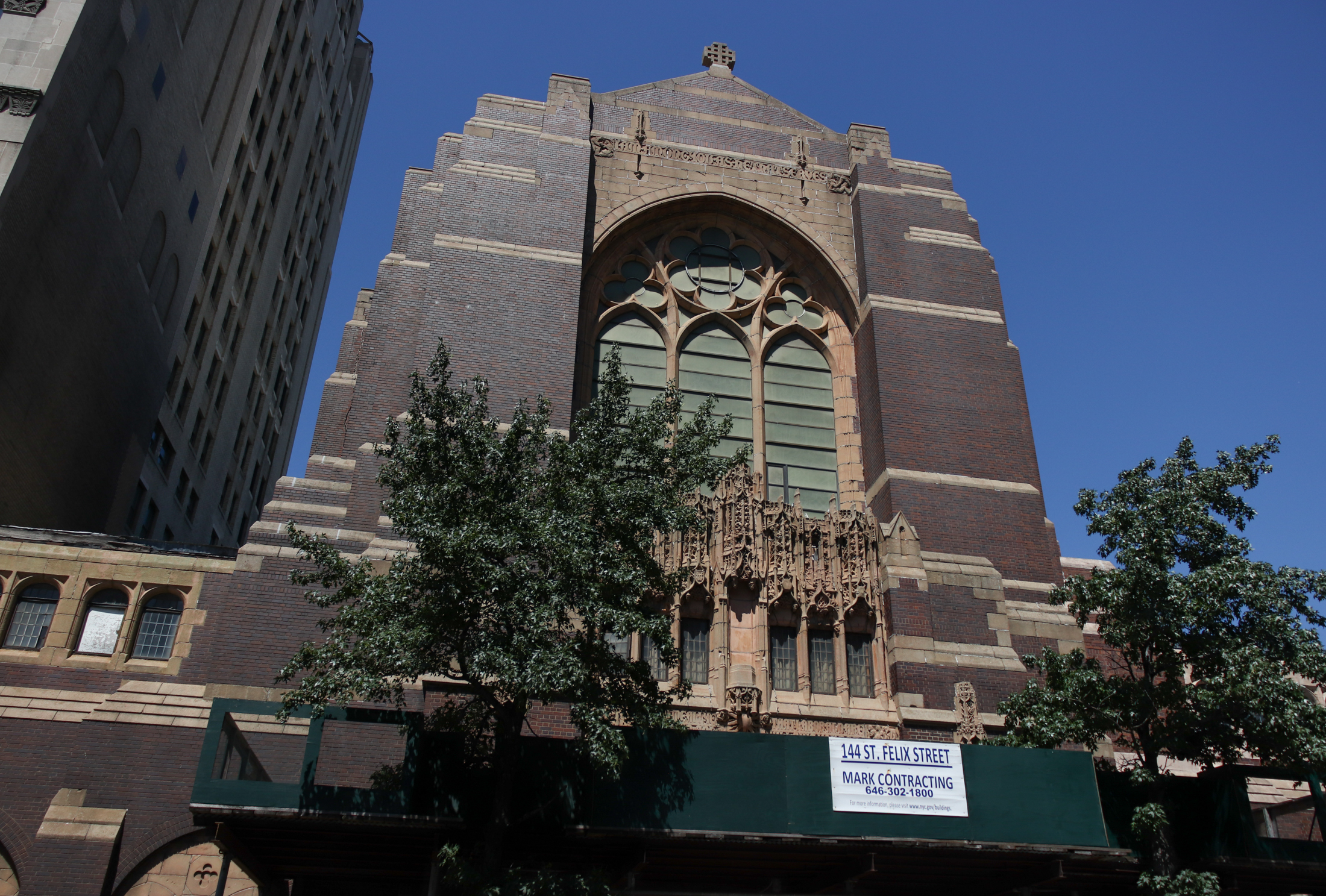Fort Greene Park: The Plan and the Reality
Fort Greene Park — the borough’s first outdoor recreation area — came into being in 1848 at the urging of Walt Whitman, then editor of the Brooklyn Daily Eagle. In 1858, the park was so heavily used (and showing it) that talk began of building an even larger one to the south. In 1867, with…

Fort Greene Park — the borough’s first outdoor recreation area — came into being in 1848 at the urging of Walt Whitman, then editor of the Brooklyn Daily Eagle. In 1858, the park was so heavily used (and showing it) that talk began of building an even larger one to the south. In 1867, with work on Prospect Park proceeding apace, Frederick Law Olmstead and Calvert Vaux were hired to redesign Fort Greene Park (then known as Washington Park). Their plans, at top, called for a vault to hold the remains of American soldiers who had died on the British prison ships that had been anchored in Wallabout Bay during the War of 1812 Revolutionary War. The Panic of 1873 resulted in only a scaled-back version (bottom photo) being actualized: The observatory and rostrum were omitted and only the foundation for the Martyrs Memorial was built. The revitalized park was still a big hit and led to a construction boom of brownstones in the surrounding area.
Photo from New York 1880: Architecture and Urbanism in the Gilded Age by Robert A. M. Stern, Thomas Mellins and David Fishman.










And there is so much more to the story. The Martyrs’ Monument, which now is at the site shown was the last design by noted architect Stanford White and dedicated in 1908 with President-elect Taft in attendence. The Monument is now shrouded and being restored. The park has a very active Conservancy and a website http://www.fortgreenepark.org.
nice!
looking forward to reading more BK history facts.
OK. The people have spoken…
Book is wrong. The British occupied New York City through much of the revolutionary war. over ten thousand people died on the prison ships. Or at least that is what the plaque on the monument says.
It was the Revolutionary War, however since many of the American corpses had been superficially buried by the Brits in the banks of the East River they were still being exhumed (or just washing up) in the early years of the 19th century. This is one of the most heinous — and most little known — events of the Rev. War. More Americans died on those prison ships (starvation, beatings, cholera etc) than on all the battlefields of the war combined.
Book says War of 1812…
Revolutionary War, not War of 1812.
Very interesting piece.
Thanks